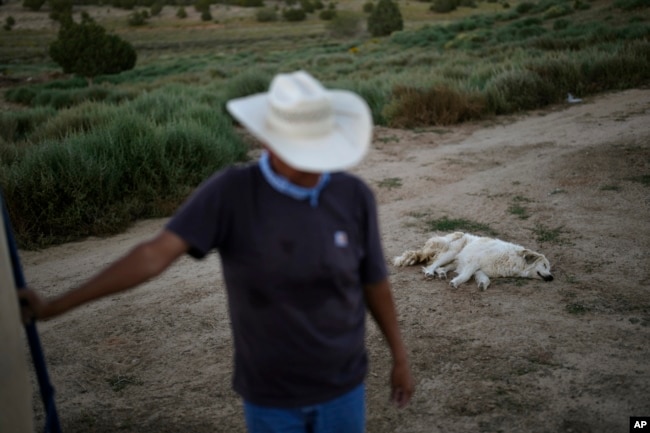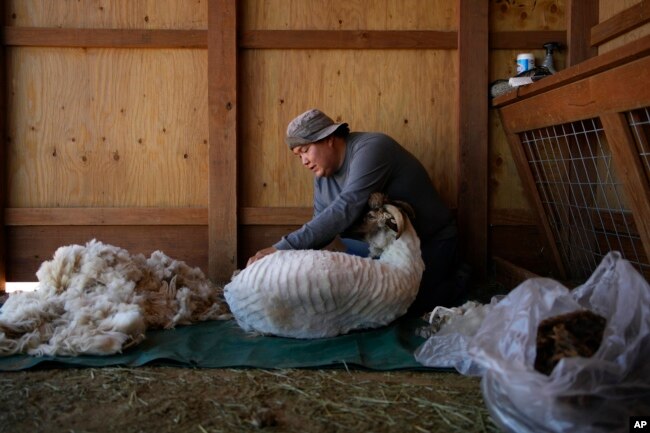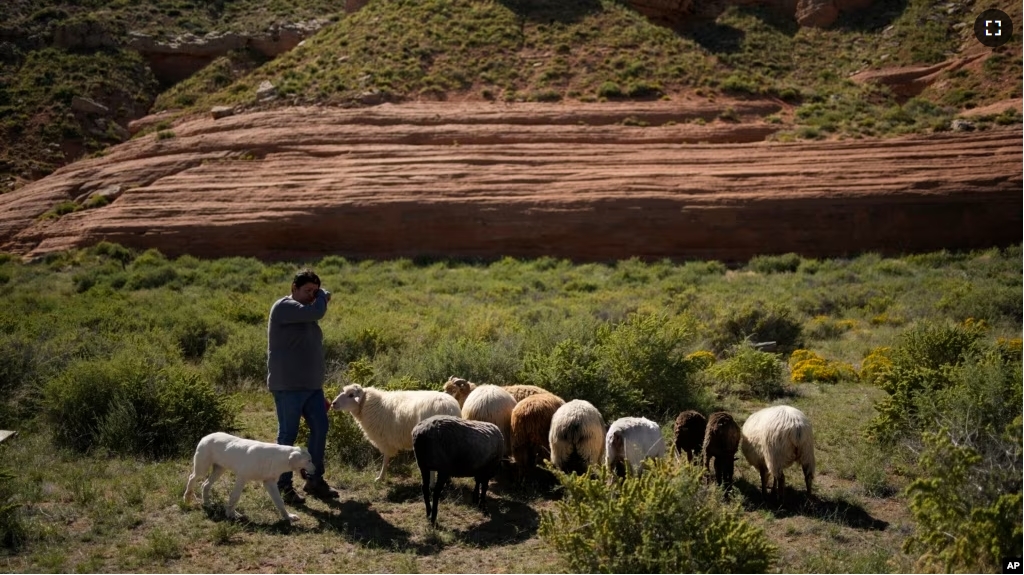Members of the Native American Navajo tribe in Arizona have been raising sheep for over 500 years.
The Navajo started working with sheep when Spanish colonists brought the animals to North America. They raised them for meat to eat and wool to keep warm. And it helped turn the Southwest into a center of economic activity.
But that way of life is in danger of ending.
Navajo people are raising fewer sheep for several reasons: it is harder to get a permit to do so, younger people are not interested in being shepherds and climate change is making it harder to get food and water for the sheep.
In past years, Navajo families in the large western states of Utah, Arizona and New Mexico raised hundreds of sheep. The sheep were of the well-known Churro breed. Now, many families are only raising only a few. Some have completely given up.
Amy Begaye is 25. She has been working with sheep since she was a girl. At first, her family gave her small jobs when it was time to butcher the sheep. She collected their blood in a container and held their legs. But now, she competes in butchering competitions.

At a recent competition called the Miss Navajo Nation pageant, she had to cut the sheep into parts in a limited amount of time.
She said she respects the work of butchers.
“We butcher the sheep because it is a way of our life,” said Begaye, who won the competition. “That’s how my ancestors were able to provide food for their families.”
There is another Navajo family called the Begays, and they work with sheep.
On most days, Jay Begay, Sr. takes the sheep out to graze near the community of Rocky Ridge, Arizona. He uses a walking stick for support and takes dogs along to keep the sheep moving in the right direction. The family had about 200 sheep in the past but have since reduced their numbers to 50.
His son, Jay Begay, Jr. said a friend told him, “You can’t blame people for not wanting to work this hard.” Begay added that it is harder now because of climate change.
A long stretch of dry weather called a drought has reduced the number of sheep. The Navajo Department of Agriculture said there were about 200,000 sheep in 2017. The next count is in 2024 and they expect the number to be lower.

Water is hard to find and a recent Supreme Court decision said the U.S. government is not required to find water for the Navajo reservation.
Valentina Clisto is a past pageant winner, like Amy Begaye. She said when she visited other Navajo communities, the people complained about the lack of water. She said dry weather means the sheep cannot find grass to eat. Instead, those who raise the animals must pay for costly food.
Lester Craig remembers when his family had 600 sheep. His mother would sell their wool to buy school clothes.

Craig stopped raising sheep because his family lives on land polluted by a nearby uranium mine. An accident in 1979 made their water unusable. He now has to travel about 30 minutes to a filling station to get water for his family and the few animals they have left.
In addition to climate change, pollution and water problems, Navajo members say the U.S. government is restricting the number of animals that can live on the land. Some have to wait for years for grazing permits.
Meranda Laughter said her family had 300 sheep five years ago. They only have 10 now.
Although many worry about the future, Laughter is hopeful. She said more education and better land management can eliminate some of the recent problems. She added that the land just needs time to heal and recover.
“We just need to give the land time to breathe,” she said.
I’m Dan Friedell.
Dan Friedell adapted this story for Learning English based on a report by the Associated Press.
__________________________________________________
Words in This Story
shepherd –n. a person who raises animals that wander and eat grasses
breed –n. a kind of animal that is different from others of the same species because of its parents
butcher –adj. a person who cuts meat from animals that are killed for food
pageant –n. a kind of competition where people perform tasks or demonstrate abilities and are scored by judges
graze –v. a way of feeding animals by giving them access to grass or plants in the wild
reservation –n. an area of land in the U.S. that is kept separate as a place for Native Americans to live
